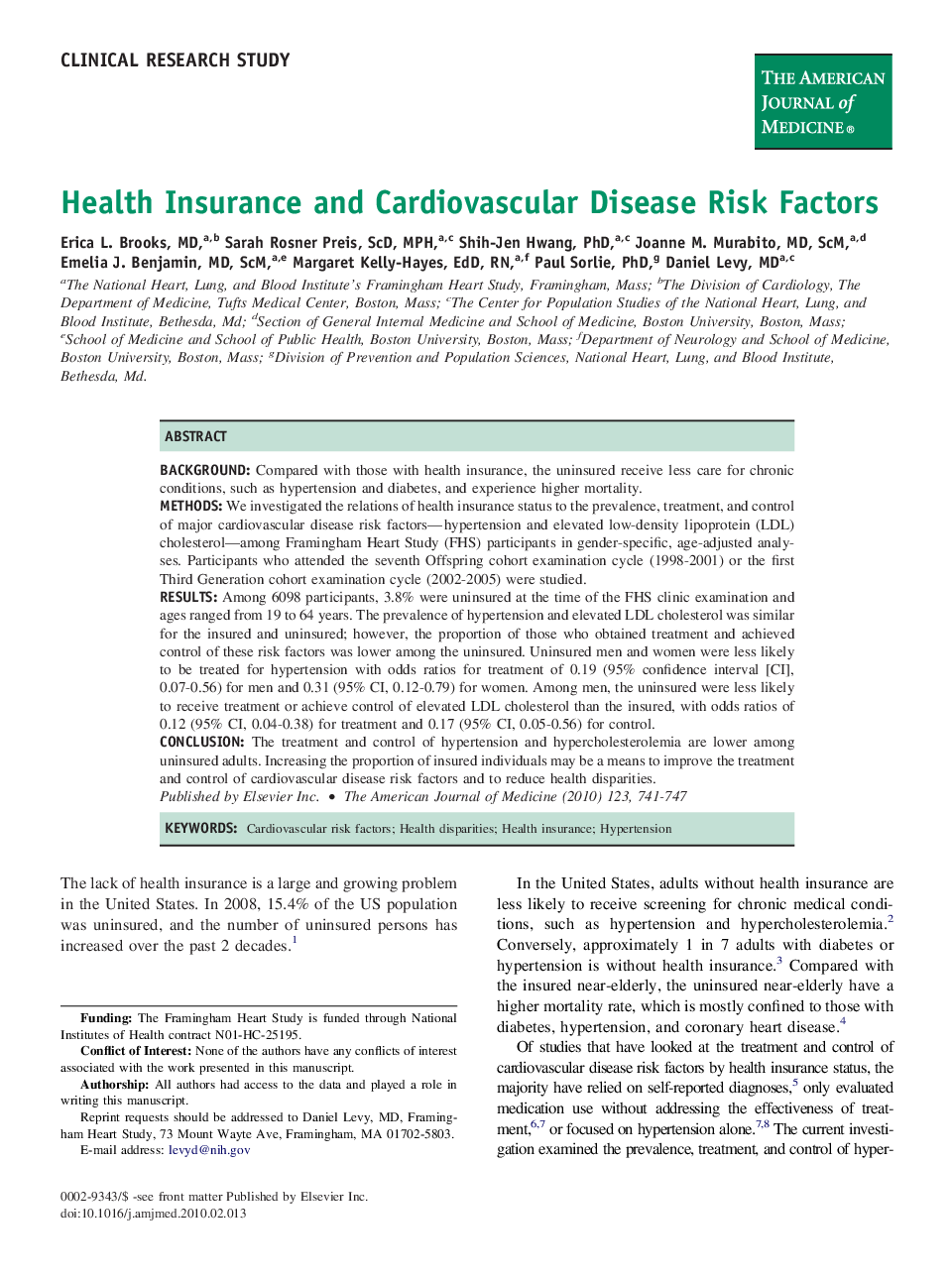| Article ID | Journal | Published Year | Pages | File Type |
|---|---|---|---|---|
| 2719118 | The American Journal of Medicine | 2010 | 7 Pages |
BackgroundCompared with those with health insurance, the uninsured receive less care for chronic conditions, such as hypertension and diabetes, and experience higher mortality.MethodsWe investigated the relations of health insurance status to the prevalence, treatment, and control of major cardiovascular disease risk factors—hypertension and elevated low-density lipoprotein (LDL) cholesterol—among Framingham Heart Study (FHS) participants in gender-specific, age-adjusted analyses. Participants who attended the seventh Offspring cohort examination cycle (1998-2001) or the first Third Generation cohort examination cycle (2002-2005) were studied.ResultsAmong 6098 participants, 3.8% were uninsured at the time of the FHS clinic examination and ages ranged from 19 to 64 years. The prevalence of hypertension and elevated LDL cholesterol was similar for the insured and uninsured; however, the proportion of those who obtained treatment and achieved control of these risk factors was lower among the uninsured. Uninsured men and women were less likely to be treated for hypertension with odds ratios for treatment of 0.19 (95% confidence interval [CI], 0.07-0.56) for men and 0.31 (95% CI, 0.12-0.79) for women. Among men, the uninsured were less likely to receive treatment or achieve control of elevated LDL cholesterol than the insured, with odds ratios of 0.12 (95% CI, 0.04-0.38) for treatment and 0.17 (95% CI, 0.05-0.56) for control.ConclusionThe treatment and control of hypertension and hypercholesterolemia are lower among uninsured adults. Increasing the proportion of insured individuals may be a means to improve the treatment and control of cardiovascular disease risk factors and to reduce health disparities.
